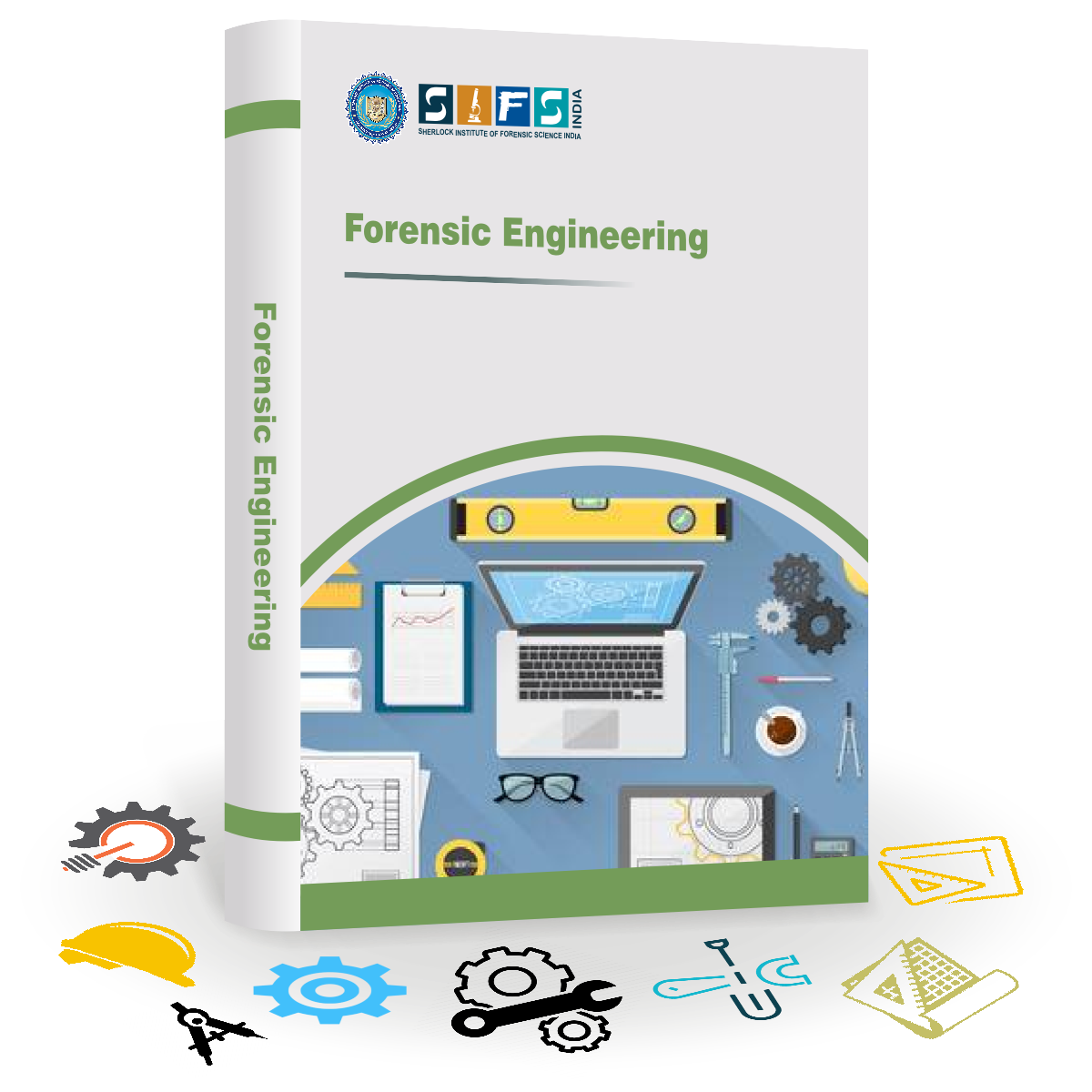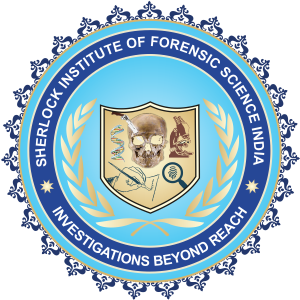MODULE 1 - FORENSIC ENGINEERING
In this module, you will learn about forensic engineering fundamentals, its historical evolution, and the qualifications needed to become a forensic engineer. You will learn the role engineers play within the legal system, like pre-inception and different aspects of case preparation, which include information gathering, resource allocation, and inspection equipment readiness.
The module also covers basic methodology for site inspection, covering site arrival, interviews with property owners and points of contact, as well as comprehensive interior, exterior, and roof inspections and evidence collection techniques. The module concludes with ethical and professional responsibilities you need to be aware of, along with relevant terminology in the field.
MODULE 2 - STRUCTURAL ANALYSIS
This module covers the fundamentals of structural analysis, structural distress, factors resulting in structural distress (substandard design and construction, forces, moments, work, energy, momentum, etc.), types of loads resulting in building collapse like static and dynamic loads, different structures, structural mechanics, force systems, Newton's laws, equilibrium, conservation principles, properties of area, mechanics of materials, and factors like wind, snow, hail, and rain that can impact structural integrity, along with a basic understanding of cylindrical pressure vessels and load analysis on pilings.
MODULE 3 - VEHICULAR ACCIDENTS
This module introduces you to vehicular falls and accidents, their historical background, simple vehicular falls (general, basic equations, ramp effects, and air resistance), and skids and impact (simple, basic equation, simple skid, tyre friction, multiple surfaces, calculation of skid deceleration, speed reduction by skidding, curved skids, break failure, changes in elevation, and anti-clock brake system).
Crush energy dissipation is also examined, along with aspects of vehicular performance such as engine limitations, breaking, stacked accelerators, power brakes, cruise control, maximum climb, and thermal efficiency estimation. The module concludes by addressing lateral tire friction and the complex dynamics of a bootlegger's turn.
MODULE 4 - VEHICLE ACCIDENT RECONSTRUCTION
In this module, you will learn about vehicular accidents along with their primary causes and analytical tools used for assessment, methodology to convert scene data into event sequences, fundamental principles and advantages of energy methods in accident reconstruction, basic energy methods, kinetic energy, friction energy dissipation, energy dissipation by crushing, roll-overs, flips, and changes in elevation.
The module also covers basic momentum methods and highlights limitations in some evaluation techniques and accident reconstruction problems, providing a comprehensive overview of accident reconstruction with implications for resolving complex accident scenarios.
MODULE 5 - THE CLASSICAL SCIENTIFIC METHOD TO ACCIDENT’S RECONSTRUCTION
The module covers the application of the scientific method in accident reconstruction, historical perspective on the development of this systematic approach, ways to apply scientific methods to accident reconstruction and their significance in discovering causative factors behind accidents, shortcomings of these methods, and their integration into the legal system.
MODULE 6 - PHOTOGRAPHIC DOCUMENTATION
In this module, the focus will be on documenting accident scenes through photography. The module begins with the significance of the accident scene, the selection of appropriate cameras for capturing the necessary details, ways to select items to be photographed, the meticulous process of accident scene documentation, and the subsequent analysis and verification of the photographs. This module highlights how you can establish the sequence of events leading to an accident by analyzing photographs.
MODULE 7 - VEHICLE LAMP DAMAGE
This module covers aspects of filament-related issues in lighting and lighting-related challenges, on/off light problems and the factors influencing the performance of filaments, the composition and properties of filament materials, issues like oxidation, brittleness, and ductility of filaments, which can affect their functionality, the use of filaments in turn signals, melted glass concerns, and other applications where filament performance is crucial along with potential sources of error.
MODULE 8 - STORM LIGHTNING DAMAGE
This module highlights essential facts about lightning phenomena, the potential damage caused by lightning strikes, the methods used to verify lightning as the cause of specific incidents, the Two-Board Shell Game to help you understand and analyze lightning damage, and strategies for mitigating the risk associated with lightning to safeguard structures and systems against the destructive forces of nature.
MODULE 9 - VIBRATION AND BLAST DAMAGE
In this module, you will learn about vibrations, an in-depth understanding of types of vibrations like air blast vibration, ground vibration, and vibrations caused by heavy equipment, the significance of pre-blast surveys as a crucial step to assess and manage potential vibration-related issues, blast monitoring practices to study the adverse effects of vibrations on structures and the environment, and post-blast surveys to assess the impact of vibrations after blasting activities to ensure safety and compliance.
MODULE 10 - EXPLOSIONS
This module provides an overview of explosions, various types of explosions, the characteristics and impact of explosions, specifications that govern explosions, the energy considerations related to explosions that highlight the immense forces at play during these events, and the methodology and factors involved in determining the point of ignition. This module will equip you with a deep understanding of the science and principles underlying explosive events.
MODULE 11 - COMBUSTION
In this module, you will be introduced to the topic of combustion and furnace-related incidents, the production of acids and the release of carbon monoxide, potential hazards associated with these chemical processes in various industrial contexts, dual fuel furnaces and systems that utilize multiple fuel sources, and over pressurization issues, highlighting the risks and consequences when pressure within a system exceeds safe limits.
MODULE 12 - FIRE AND ITS BEHAVIOR
This module covers fire-related topics, various aspects of fire patterns and their sources, the classification and types of fires (wild, marine, motor vehicle, and incendiary fires), the relation between electricity and fire, including failure analysis and relevant analytical tools, and methodologies to determine fire origin (initial reconnoiter, low point, fall-down, centroid method, including both weighted and unweighted).
You will also learn about fire spread using sequential analysis, ignition energy sources, combinations of energy sources, the steps involved in collecting, preserving, documenting, and examining fire scenes, and the legal considerations involved in fire investigations.
MODULE 13 - ARSON
This module explores the domain of arson investigation, the key aspects of arson, the basic problems encountered by arsonists, arson precursors, such as daisy chains, typical physical characteristics related to an arson event, secondary characteristics that help investigators identify potential arson incidents, arsonist profile analysis to gain insights about the psychological and behavioral traits common among arsonists, and the significance of chemical analysis in arson investigations.
MODULE 14 - ELECTRICAL SHORTING
In this module, you will learn about the concept of electrical forensic investigation, the thermodynamics of a simple resistive circuit, the difference between primary and secondary shorting, the causes and consequences of short circuits, beading and fusing and the potential reasons behind their occurrence, and the common locations where shorting usually occurs, providing valuable insights to the investigators on how to handle the complexities of electrical failures and fires.
MODULE 15 - HAIL DAMAGE
This module covers hail-related forensic investigation, the formation of hail and the factors influencing the size range of hailstones, the size threshold at which hail damage becomes a concern, the methods for assessing such damage to understand the impact of hail on structures and vehicles and for insurance claims, and the concept of burnish marks as indicators in hail damage investigations.
MODULE 16 - DROUGHT
The module introduces you to the impact of drought on soil and structural integrity, the significance of understanding the effects of drought on various aspects, basic soil properties crucial for understanding soil behavior during drought conditions, the Atterberg Limits to assess soil characteristics and the changes that might take place in the soil, differential settlements that can occur due to drought-induced soil changes, and recovery when rainfall returns, which highlights the cyclical nature of drought and its effect on the environment and infrastructure.
MODULE 17 - SLIP AND FALL ACCIDENTS
This module covers the concept of slip and fall accidents, the significance of the coefficient of friction (COF) in the context of floors and safety, the statistical background and the technical aspects of measuring COF, the relevance of these measurements to floor surfaces, and their interaction with shoe coatings. This module will equip you with an understanding of COF to ensure safety and prevent the occurrence of slip and fall incidents.
MODULE 18 - WATER PIPE FREEZE UPS
In this module, you will learn about freezing in pipes and its implications, key differences between ice and water within pipes, the transformation process that occurs when water freezes, various pipe stresses when subjected to freezing, step-wise fracturing due to ice expansion, the role pipe ends play in the context of freeze-ups, and the priority of freeze-up situations.
MODULE 19 - MACHINERY GUARDING
This module covers safety measures and responsibilities in the workplace, key elements of safety, including direct barriers, protective clothing, safety devices, and guarding by location, and the responsibilities of both employers and manufacturers related to the implementation and maintenance of these safety measures. Employers must ensure a safe work environment for their employees, and manufacturers need to bear the responsibility to produce equipment that adheres to safety standards.
MODULE 20 - EARTH MOVEMENT
In this module, you will gain insights about topics related to soil behavior, techniques for surface investigations focusing on direct measurements of consistency and relative density, as well as the interpretation of water content in soils, geohazards like landslides and mudflows, modes and processes of erosion and sedimentation, and subsidence (sinking of ground caused by the removal of water, oil, gas, or mining). You will also learn about rock identification (igneous, sedimentary, and metamorphic), seismic events like earthquakes, damage resulting from blasting, and the impact of wave pressure.
MODULE 21 - THE ENGINEER AND EXPERT WITNESS
This module explores the ethical considerations forensic engineers need to follow, claim analysis, and rules of evidence, covering essential concepts like relevancy, hearsay, exceptions to hearsay, and privileged communication, as well as the adversarial nature of the legal system and how to address incomplete information.
A sample schedule of events in a litigated dispute is provided to give readers insight into the legal process. The section touches on the trial phase and strategies used to discredit engineers, concluding with some observations about the relationships between lawyers and engineers. These elements collectively offer a well-rounded view of the intersection of engineering and the legal system.






